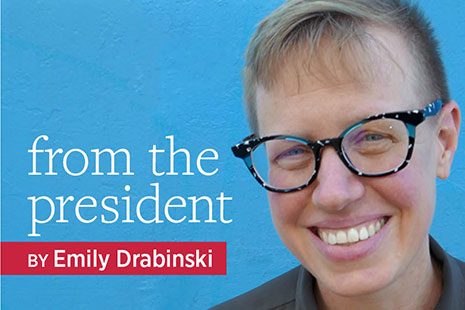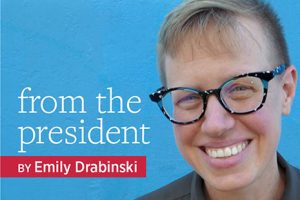
When you’re president of the American Library Association (ALA), you get asked a lot of questions. “What are you reading right now?” (Pure Life by Eugene Marten.) “Aren’t libraries obsolete?” (Nope.) “Will the organized censors win?” (No way.)
But here’s one that’s hard to answer: “What’s your favorite library?”
When you’ve seen as many amazing libraries as I have, it’s impossible to choose. For example, I’ve met with Jennifer DeCarlo, director of Easton Library in Greenwich, New York, who maintains an onsite fridge with fresh food for those in need.
And Chulin Meng, director of library technology at Lehigh University in Bethlehem, Pennsylvania, who works with large language models to integrate artificial intelligence in research.
Rayette Sterling, manager of the Mountain View branch of Anchorage (Alaska) Public Library, greets each of her patrons by name.
The public library in my hometown of Boise, Idaho, has LIBRARY! emblazoned on the front of its buildings, exclamation point included.
The Windsor Terrace branch of Brooklyn (N.Y.) Public Library, a short walk from my apartment, is my go-to for browsing on the weekends.
But my favorite library? It’s always the most recent one I’ve visited.
As much as individual libraries are distinct, they also have a lot in common. Librarians select, acquire, describe, organize, and provide access to information. These fundamentals might look different in time and place, but they remain the core of our profession.
Libraries are for everyone, even people who are nothing like us. It is our professional responsibility to ensure that our readers can see themselves in our collections.
For a few months of my career, I weeded the CD-ROM collection at a small academic library. If information is circulated on a thin disc of polycarbonate plastic, librarians will circulate thin discs of polycarbonate plastic. Ensuring access regardless of medium or message is what we do.
We are in a painful chapter in the history of our profession and our country. I lean into what holds us together in times like these, when forces that exploit and profit from division seek to cut us off from one another. A time marked by external efforts to sow fear among library workers, including attempts to restrict participation in the Association in multiple states. In some parts of the country, standing next to me in a photo is deemed risky behavior that might endanger an upcoming millage.
At ALA’s 2023 Annual Conference in Chicago, I sat next to Valdez (Alaska) High School librarian Pam Verfaillie at a Freedom to Read Foundation meeting. She passed me a note that read, “What are you doing February 17–21?” I passed it back. “Hanging out with you in Alaska?”
Eight months later, following the Alaska Society for Technology in Education Conference in Anchorage, I was sitting in the heated passenger seat of her car, visiting school, public, and academic libraries across the city. I live in Brooklyn, with a population of 2.6 million; Pam lives in a town of 4,000. I shop at a food co-op. Pam and her community hunt and fish for food, filling freezers and sharing with neighbors. But on the core stuff—the stuff that matters—we are aligned: Libraries are crucial public infrastructure. Early literacy matters. Libraries are for everyone, even people who are nothing like us. It is our professional responsibility to ensure that our readers can see themselves in our collections.
Even if we disagree about everything else, we know libraries are worth preserving and expanding. And as library workers, our capacity to make decisions that best respond to the demands of our communities must be protected. Figuring out how to do that is the task before us all.

